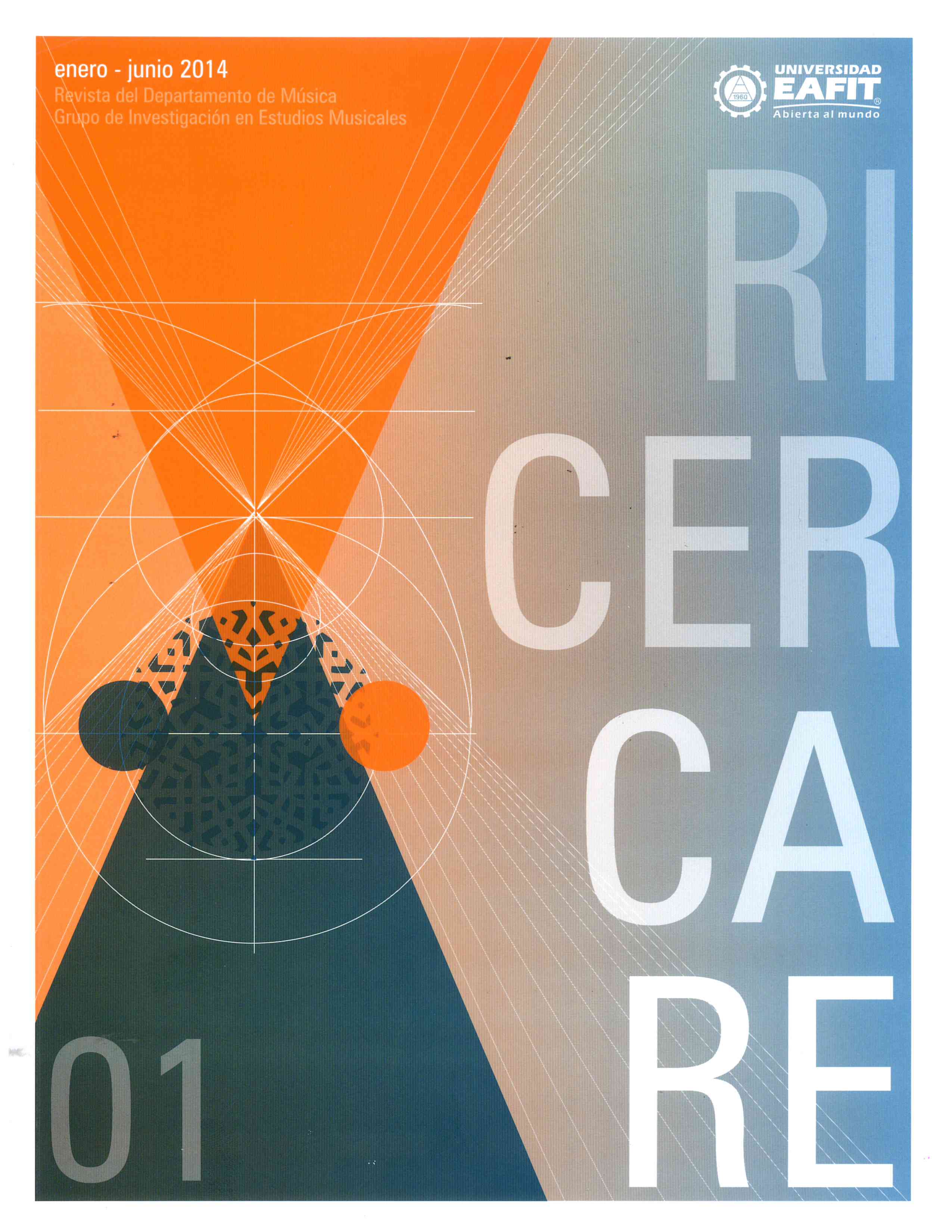The "secret elements" of musical performance
Main Article Content
Keywords
musical performance, playing, semiotics, gesture, corporeality (bodyness), performance practice
Abstract
Along the XIXth century, the roles of composers and performers seceded and this gave rise to diverse opinions about the extents of the performer's role and the way the music work and it's graphic text, the score, should be conceived. This article reviews some of these opinions, in all of which however we find a common element admitted, the performer's unavoidable contribution, defined in terms of the so called musical cognitive - enactive semiotics, the gesture and performance studies and the body participation in that performance as an instance of meaning and, at the same time, vehicle of communication of that musical meaning.
Downloads
Download data is not yet available.
References
Adorno, T. D. (2002). Essays on Music. Berkeley: University of California Press.
Auslander, P. (2006). Musical Personae. The Drama Review.
Burkhart, C. (1983). Schenker’s Theory of Levels and Musical Performance. En D. Beach (Ed.), Aspects of Schenkerian Theory. United States of America: Yale University Pess.
Cook, N. (Abril de 2001). Between Process and Product: Music and/as Performance. The Online Journal of the Society for Music Theory, 7(2).
Ferrara, L. (1991). Philosophy and the Analysis of Music: Bridges to Musical Sound, Form, and Reference. United States of America: Greenwood Press.
Gadamer, H.-G. (2006). Estética y hermenéutica. Madrid: Editorial Tecnos.
Gibson, J. J. (1979). The Ecological Approach To Visual Perception. New Jersey: Lawrence Erlbaum Associates.
Harnoncourt, N. (2006). La música como discurso sonoro: Hacia una nueva comprensión de la música. Barcelona: Acantilado.
Lakoff, G., & Johnson, M. (1999). Philosophy In The Flesh: the Embodied Mind and its Challenge to Western Thought. New York: Basic Books.
Morán Martínez, M. C. (2012). Psicología y arte: la percepción de la música. Revista Ciencias(100), 58-64.
Muñoz Gutiérrez, C. (1999). Reseña a: Philosophy in the Flesh, the embodied mind and its challenge to Western Thought deGeorge Lakoff y Mark Johnson. New York: Basics Books.
Nagore, M. (Enero 2004). El análisis musical, entre el formalismo y la hermenéutica. Músicas al Sur: Revista Electrónica Musical(1).
Newlin, D. (1980). Schoenberg Remembered: Diaries and Recollections (1938-76). New York: Pendragon Press.
Pelinski, R. (2005). Corporeidad y experiencia musical. (R. L. Cano, Ed.) Recuperado el 24 de Septiembre de 2011, de TRANS - Revista Transcultural de Música: http://www.sibetrans.com/trans/a177/corporeidady- experiencia-musical#_ednref33
Small, C. (1999). El Musicar: Un ritual en el Espacio Social. Trans: Revista transcultural de música(4).
Stravinsky, I. (1977). Poética Musical. Madrid: Taurus Ediciones.
Auslander, P. (2006). Musical Personae. The Drama Review.
Burkhart, C. (1983). Schenker’s Theory of Levels and Musical Performance. En D. Beach (Ed.), Aspects of Schenkerian Theory. United States of America: Yale University Pess.
Cook, N. (Abril de 2001). Between Process and Product: Music and/as Performance. The Online Journal of the Society for Music Theory, 7(2).
Ferrara, L. (1991). Philosophy and the Analysis of Music: Bridges to Musical Sound, Form, and Reference. United States of America: Greenwood Press.
Gadamer, H.-G. (2006). Estética y hermenéutica. Madrid: Editorial Tecnos.
Gibson, J. J. (1979). The Ecological Approach To Visual Perception. New Jersey: Lawrence Erlbaum Associates.
Harnoncourt, N. (2006). La música como discurso sonoro: Hacia una nueva comprensión de la música. Barcelona: Acantilado.
Lakoff, G., & Johnson, M. (1999). Philosophy In The Flesh: the Embodied Mind and its Challenge to Western Thought. New York: Basic Books.
Morán Martínez, M. C. (2012). Psicología y arte: la percepción de la música. Revista Ciencias(100), 58-64.
Muñoz Gutiérrez, C. (1999). Reseña a: Philosophy in the Flesh, the embodied mind and its challenge to Western Thought deGeorge Lakoff y Mark Johnson. New York: Basics Books.
Nagore, M. (Enero 2004). El análisis musical, entre el formalismo y la hermenéutica. Músicas al Sur: Revista Electrónica Musical(1).
Newlin, D. (1980). Schoenberg Remembered: Diaries and Recollections (1938-76). New York: Pendragon Press.
Pelinski, R. (2005). Corporeidad y experiencia musical. (R. L. Cano, Ed.) Recuperado el 24 de Septiembre de 2011, de TRANS - Revista Transcultural de Música: http://www.sibetrans.com/trans/a177/corporeidady- experiencia-musical#_ednref33
Small, C. (1999). El Musicar: Un ritual en el Espacio Social. Trans: Revista transcultural de música(4).
Stravinsky, I. (1977). Poética Musical. Madrid: Taurus Ediciones.

